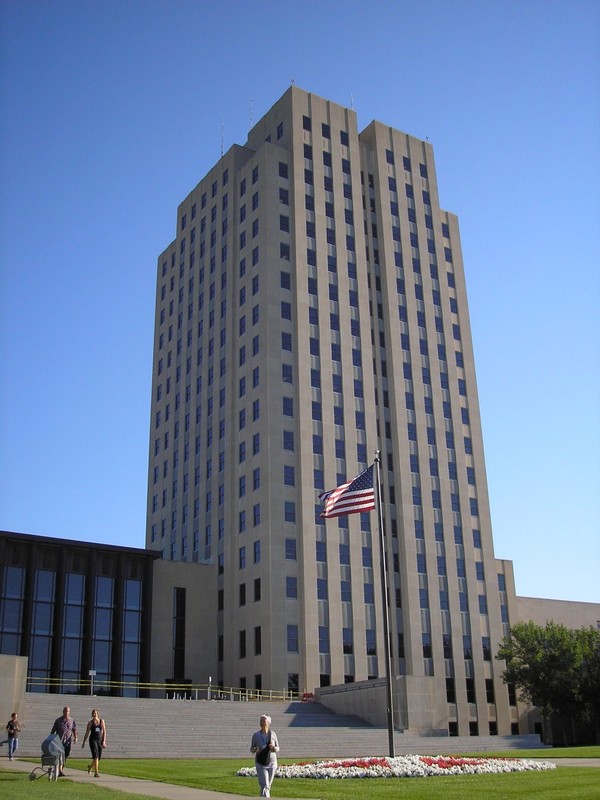This entry includes a walking tour! Take the tour.
Introduction
Text-to-speech Audio
Completed in 1934 at the height of the Great Depression, North Dakota's state capitol departed dramatically from traditional dome-topped classical statehouses. Instead, it is a practical office tower.
Images
North Dakota State Capitol

Backstory and Context
Text-to-speech Audio
North Dakota's state capitol was built during the Great Depression to replace an earlier building destroyed by fire and to accommodate a growing state bureaucracy. Abandoning traditional grandiose architectural styles, North Dakotans chose to build a functional office tower.
North Dakota's first capitol was constructed in the 1880s, prior to statehood. Like many United States statehouses, the original plan called for a dome, rotunda, and flanking legislative wings. Budgetary limitations led to a scaled-down structure that was later added onto in a rather haphazard fashion. It burned to the ground on December 28, 1930.
Lawmakers imposed a $2,000,000 spending limit on the construction of a replacement statehouse. The traditional dome and rotunda statehouse style was designed to be imposing, but produced lots of unusable interior space. Instead of building yet another domed statehouse, North Dakota's Board of State Capitol Commissioners chose to build a modern seventeen-story office building to accommodate the state's growing bureaucracy. A shorter legislative wing stood to one side. A stylistically similar judicial wing was added on the opposite side in 1979-80.
The commission chose Chicago architects John A. Holabird and John W. Root to lead the design team. Grand Forks architect Joseph Bell DeRemer (who designed several prominent buildings on the University of North Dakota campus) and William F. Kurke were named as North Dakota architectural associates. Due to budget constraints, the commission stripped Holabird and Root's design of much of its planned Art Deco decoration. The final effect more closely resembles the International style that dominated commercial construction after World War II.
In the early 1930s, a long tradition of North Dakota fiscal frugality collided with the realities of the Great Depression. The project's limited budget led to a simplified and highly functional design. Defenders pointed out that neighboring Minnesota's 1905 capitol featured only 29% usable space. In contrast, North Dakota's statehouse was 80% usable. It cost only $0.46/cubic foot.1 Skeptics called it "George Shafer's silo," and later "Langer's silo" after the two governors who served during its construction.2
Sources
1. Remele, Larry, editor. The North Dakota State Capitol: Architecture and History. Bismarck, ND. State Historical Society of North Dakota, 1989: 51.
2. Biek, Robert F.. A Visitor's Guide to the North Dakota Capitol Grounds: Buildings, Monuments, and Stones. Bismarck, ND. State Historical Society of North Dakota, 1995: 8.
